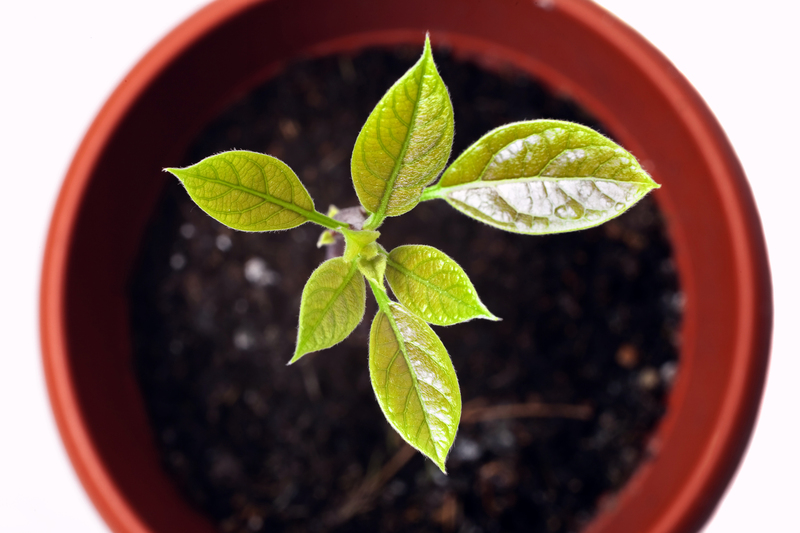3 Steps to a Weed-Free Sanctuary in Your Backyard
Posted on 24/09/2025
3 Steps to a Weed-Free Sanctuary in Your Backyard
Imagine stepping outside your door and entering a stunning backyard sanctuary, untouched by the nuisance of weeds. Achieving a weed-free garden may seem daunting, but with the right strategy, you can reclaim your outdoor haven. This guide offers comprehensive, actionable steps to transform your space into a weed-free paradise. Discover the secrets to long-lasting weed control and enjoy your backyard sanctuary year-round.
Why a Weed-Free Backyard Matters
Weeds are not just an eyesore in your yard; they compete with your cherished plants for water, nutrients, and sunlight. They attract pests, spread quickly, and, if left unchecked, can undermine the beauty and health of your landscaping. Creating a weed-free outdoor sanctuary is essential for:
- Improved curb appeal - A tidy, weed-free yard increases your property's visual value.
- Healthier plants - Eliminate competition for resources with a weed-free landscape.
- Allergy reduction - Some weeds, like ragweed, can trigger allergies.
- Enhanced relaxation - An orderly, weed-free backyard promotes peace and wellbeing.

Step 1: Assess and Prepare Your Backyard Sanctuary
Before you can eliminate weeds, it's crucial to *understand* the landscape you're dealing with. Proper assessment and preparation set the foundation for a lasting weed-free backyard.
Identify Common Weed Types
Knowing your adversary is half the battle. Weeds generally fall into three categories:
- Annual weeds (e.g., crabgrass, chickweed): Germinate and die within one season.
- Perennial weeds (e.g., dandelions, Bermuda grass): Return year after year through roots and seeds.
- Biennial weeds (e.g., bull thistle): Grow leaves one year and flower the next.
*Identifying these weeds* in your yard will help you choose the most effective control methods.
Clear Existing Weeds
To jumpstart your mission for a weed-free garden retreat:
- Hand-pull weeds - Use a weeding tool for deep-rooted offenders.
- Cut off seed heads before they mature and spread.
- Avoid tilling unless necessary, as it can bring buried weed seeds to the surface.
Pro Tip: Weed after rainfall or watering, as this softens the soil and makes removal easier.
Soil Preparation for Weed Prevention
A *healthy soil environment* makes it harder for weeds to thrive. Follow these suggestions:
- Test your soil for pH and nutrient levels.
- Add compost or organic matter to improve soil structure.
- Level the surface - Fill in low spots where water can pool and weeds take root.
Step 2: Implement Effective Weed Control Strategies
Now that your backyard is clean and prepped, it's time to block weed growth proactively. Here's how to establish lasting *weed barriers* for your garden oasis:
Apply Mulch for Natural Weed Suppression
Mulching is one of the simplest and most effective tools in your quest for a weed-free sanctuary. Here's how to use mulch to your advantage:
- Organic mulch (e.g., wood chips, shredded bark, straw): Improves soil as it decomposes and smothers weed seedlings.
- Inorganic mulch (e.g., landscape fabric, gravel): Provides a sturdy physical barrier against weeds.
How to Apply Mulch:
- Lay 2-4 inches of mulch evenly over bare soil.
- Keep mulch a few inches from plant stems to avoid rot.
- Replenish mulch as it decomposes or becomes thin.
With a proper mulch layer, you'll drastically reduce the number of weed seeds that can penetrate your soil and take root.
Use Ground Covers and Dense Plantings
Mother Nature hates a vacuum. The more bare ground in your yard, the more opportunities for weeds to move in. Combat this by:
- Planting ground covers like creeping thyme, ivy, or clover.
- Spacing flowers, shrubs, and vegetables closely to shade the soil.
- Rotating crops in vegetable beds to disrupt weed life cycles.
By denying weeds sunlight and space, you reinforce your weed-free zone naturally.
Utilize Landscape Barriers for Persistent Weeds
Stubborn, deep-rooted weeds may require physical barriers to truly eradicate. For these problem areas:
- Install landscape fabric under mulch in perennial beds or paths.
- Edge your beds with metal or stone borders to block invasive grasses.
- Use sheet mulching - lay cardboard or newspaper before mulching to smother weeds underneath.
Organic and Eco-Friendly Weed Control Methods
If you're committed to a safe, chemical-free weed-free sanctuary, try these options:
- Boiling water directly poured onto weeds in hardscaped areas.
- Homemade vinegar sprays for spot treatment (be cautious around wanted plants).
- Flame weeders for driveways or gravel paths.
Note: Always use non-chemical methods responsibly to avoid harming soil and beneficial organisms.
Step 3: Maintain and Monitor Your Weed-Free Sanctuary
Achieving a weed-free backyard haven is only part of the journey--the real key is maintaining your pristine landscape. Consistent care prevents weeds from returning and saves you effort in the long run.
Establish a Regular Maintenance Routine
- Inspect your garden weekly for small weed outbreaks.
- Remove weeds while young - they'll be easier to pull and less likely to seed.
- Top up mulch and repair bare patches as needed to halt new growth.
Practice Smart Watering Techniques
Weeds thrive in disturbed, moist soil. Prevent their spread by:
- Using drip irrigation or soaker hoses to water plant roots directly.
- Avoiding overhead sprinklers that wet open soil, inviting weeds.
- Watering early in the day to minimize evaporation and discourage disease.
Encourage a Healthy Turf and Plant Community
Thick, healthy grass and plantings outcompete weeds for resources. Achieve this by:
- Applying fertilizer as recommended for your yard and region.
- Mowing your lawn at the right height (generally higher = fewer weeds).
- Divide and transplant perennials to keep beds lush and competitive against invaders.
Deal with Recurring or Invasive Weeds Promptly
Persistent weeds like bindweed, nutsedge, or ground ivy require special attention:
- Dig up roots thoroughly - even small fragments can regrow.
- Smother with cardboard and mulch for an entire season, if needed.
- Consult local extension offices or gardening clubs for targeted advice.

Bonus Tips: Make Your Weed-Free Backyard a Lasting Sanctuary
- Sanitize garden tools between uses to avoid spreading weed seeds.
- Compost carefully - avoid adding weeds that have already gone to seed.
- Attract beneficial insects (like ladybugs and predatory beetles) that feed on weed pests.
- Host "weed & wine" parties with friends for fun, communal upkeep!
An *integrated approach* not only preserves your weed-free backyard haven, but also makes it more enjoyable year after year.
Conclusion: Your Path to a Tranquil, Weed-Free Backyard Sanctuary
To recap, the ultimate backyard sanctuary is within reach when you follow these three proven steps:
- Assess and prepare your yard for battle by eliminating existing weeds and improving soil health.
- Implement smart, layered weed control techniques, from mulching and ground covers to organic solutions and landscaping barriers.
- Maintain your sanctuary with vigilant, ongoing care for long-term weed suppression.
Searching for a way to restore peace, beauty, and relaxation to your own backyard? By adopting these best practices, you'll soon be the proud owner of a weed-free oasis--an escape from the bustle of daily life right outside your door.
Take the first step today. With patience, persistence, and these expert strategies, your weed-free backyard sanctuary is more attainable than ever.
Ready to transform your outdoor space? Share your own weed-control tips, stories, or questions in the comments below, and help fellow gardeners enjoy a thriving, tranquil landscape!

